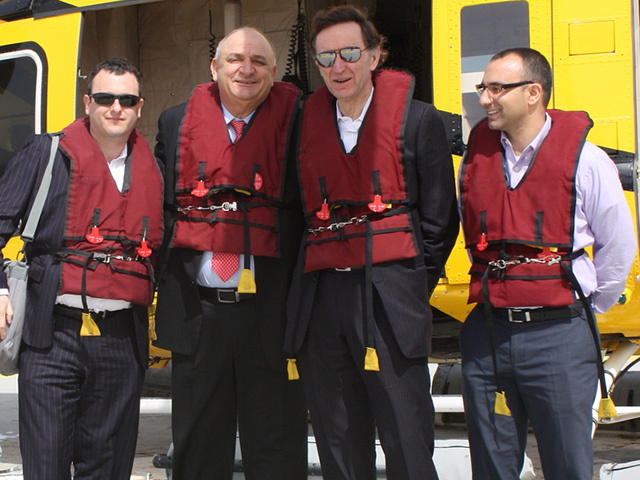
The current and for some years driving force behind Israel’s successful quest for energy is US independent Noble Energy which, coincidentally, is now pushing hard offshore the Falkland Islands via a farm-in arrangement with Falkland Oil & Gas and Edison.
Noble was able to rapidly gain traction once it became clear that milestone gas discoveries in Tamar followed by Leviathan were huge.
Energy was advised during its visit to Israel just ahead of first commercial gas from Tamar that Noble had run the project its way with little scope for local or even European-Mediterranean supply chain/offshore fabrication companies to secure work.
A notable exception was Israel Shipyards of Haifa, which secured both fabrication and extensive offshore logistics support work.
Detailed engineering and design went to Alliance Engineering, which is a unit of Aberdeen’s Wood Group.
The platform’s topsides and jacket were built in the US by Kiewit at Corpus Christie and then shipped to the Mediterranean aboard barges.
Aker Solutions secured the subsea control systems contract, plus the Norwegian group supplied the umbilicals package and MEG recovery plant.
Noble’s approach to Tamar contracts has clearly rankled with some and steps are apparently being taken to try and ensure a more equitable distribution of contract opportunities with the Leviathan project, and a less autocratic (apparently) contracting style.
On the other hand, one source told Energy that, with next to zero offshore construction and operations experience, what could the Israelis reasonably have expected Noble to have done.
Despite such issues, Tamar started producing in March, just after a visit to the Leviathan project by UK trade secretary Lord Green, who was clearly impressed with what he saw. Green was spearheading a small UK oil and gas delegation that was pathfinding oil and gas opportunities in Israel.
Tamar production has ramped up rapidly with all five of the subsea wells reported to be producing at stable rates totalling 300million cu.ft. per day.
When combined with volumes from the existing Mari-B field, this brings output to some 500million cu.ft per day, with the year-one production average expected to quickly build to around 700million cu.ft per day, with export ashore via the Ashdod Onshore Terminal.
$3.25billion Tamar is designed to deliver up to 1billion cu.ft per day with volumes forecast to hit this maximum capacity during the peak summer demand in Q3 this year.
Aside from grumblings about the construction of the 10,000-tonne Tamar platform, there is another major issue that some at least among the Israeli business and political elite are worried about . . . what is done with the gas.
Some think Noble will get its way and that a high proportion of Israel’s gas resource will be sold off as LNG, instead of being husbanded as a truly strategic resource that can guarantee energy self-sufficiency for the next 100 years and more, not counting prospects for shale oil.
Noble is very clear in that it wants big LNG projects . . . it wants to monetise what it has found and is taking the same attitude to Cyprus where the Aphrodite field has yet to be appraised.
However, unlike Cyprus, whose economy has crashed and where bail-out by the EU is seen as the only way out of the chasm, Israel’s economy is in good shape, having grown 10% over the past three years.
On April 14, the Israeli cabinet re-approved the establishment of a sovereign wealth fund to prevent a steep appreciation of the shekel once fields like Tamar and Leviathan start to generate high levels of income.
Bank of Israel Governor Stanley Fischer has called for a sovereign wealth fund similar to Norway’s to safeguard the billions of dollars in windfall natural gas revenue.
Israel wants to avoid the so-called Dutch Disease, whereby a sudden explosion in national wealth overheats the currency and undermines export industries.
There is a clear body of opinion that says LNG exports should be strictly limited and that the gas be husbanded to Israel’s long-term advantage in the region.